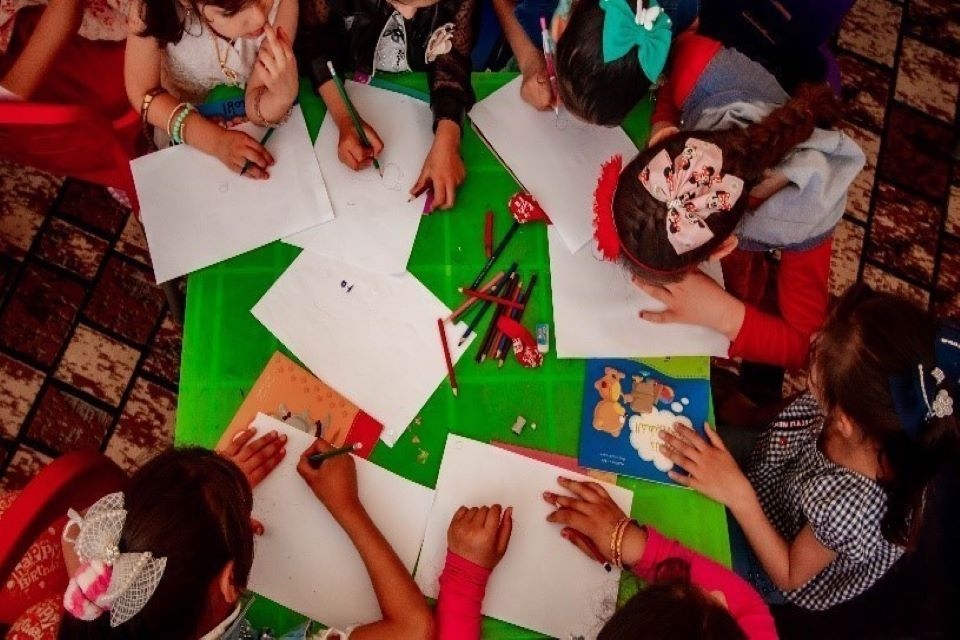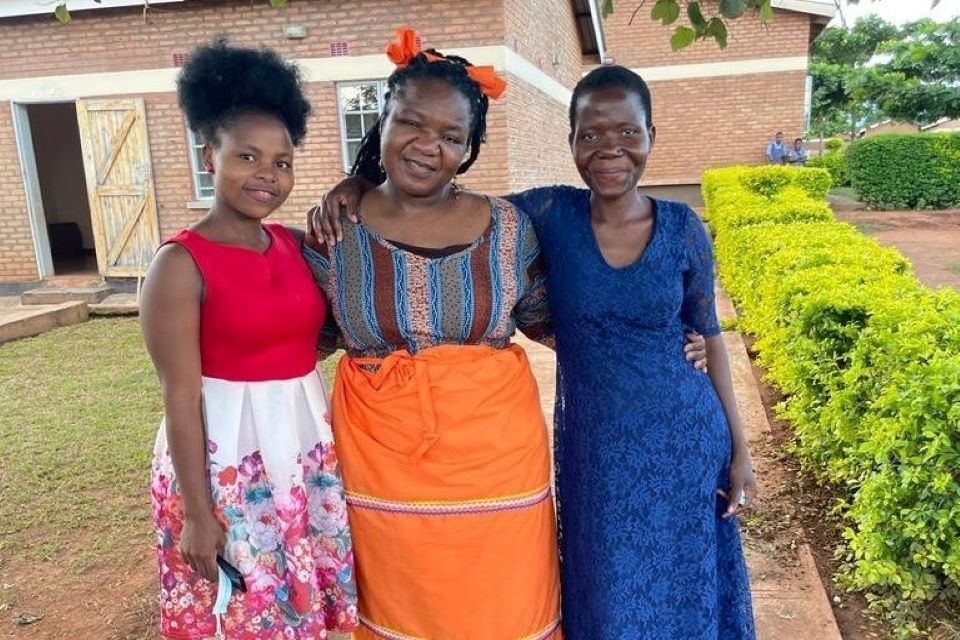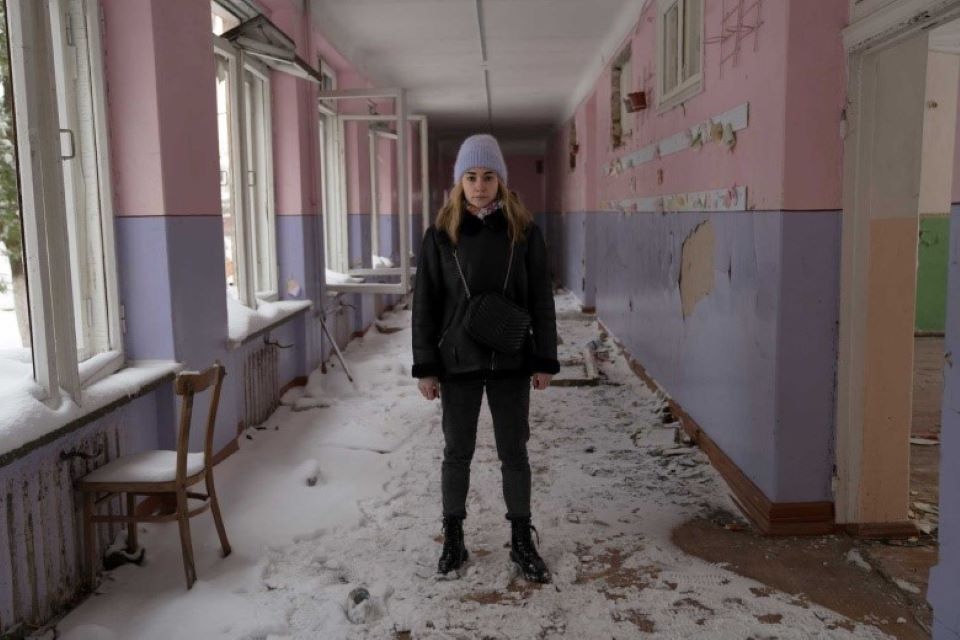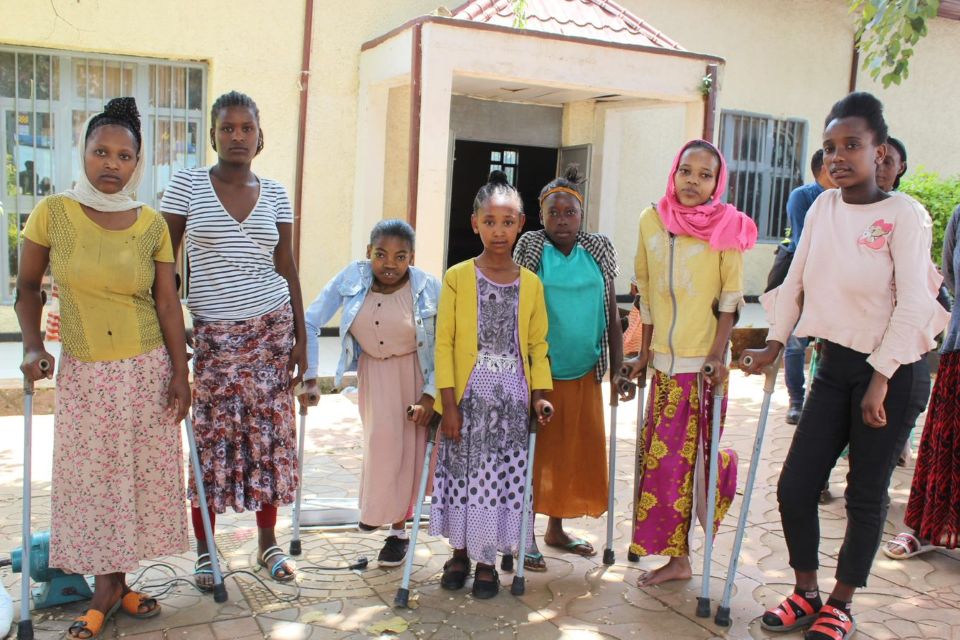UK government support for girls’ education worldwide
Updated 19 February 2024
1. The challenge
Two youth leaders, Tendai and Ayesha, interview Minister of State for Development and Africa Andrew Mitchell about the power of girls’ education:
Youth leaders interview Minister Mitchell (YouTube)
The global context
Seven out of 10 children in low- and middle-income countries cannot read and understand a simple story by the age of 10. This increases to 9 out of 10 children in sub-Saharan Africa [footnote 1]. The COVID-19 pandemic put many children in lower-income countries – especially girls – at risk of dropping out of school altogether. There are already 244 million children not in school globally.
The UK government is working to provide quality education for all children. We are guided by the Global Objectives on access and learning in low- and lower-middle income countries by 2026, which were agreed by the G7 during the UK’s Presidency in 2021:
- 40 million more girls in school
- 20 million more girls reading by age 10
Working with the United Nations Girls’ Education Initiative, and other partner organisations, we published a baseline report on the G7 Global Objectives in November 2022. The first follow-up G7 Global Objectives 2023 report (PDF, 12MB), published in February 2024, uses data from 2022 to track progress against the baseline. It shows that, in 2022, there were more girls out of school than in 2021, rather than fewer. A lack of learning data for 2022 also means we cannot measure progress on learning. This data demonstrates the scale of the challenge.

Group activity within a school library. Credit: Manahel, Syria Education Programme.
The International Women and Girls Strategy sets out our approach to advancing gender equality around the world. This includes standing up for the right of every girl to have 12 years of quality education. Advancing gender equality is a policy that benefits everyone. It brings freedom, boosts prosperity and trade, strengthens global security and builds resilience. It is the fundamental building block of all healthy democracies.
This does not mean we value boys’ education less highly. The majority of our education work benefits boys as well as girls. We recognise that only by involving boys and men can we address harmful gender stereotypes and improve the barriers holding girls and women back. For instance, teaching that challenges discriminatory values and beliefs and expands children’s horizons is as important for boys as for girls.
2. The results
UK government’s role
The UK is helping to change lives. We have supported 19.8 million children, including over 10 million girls, to gain a decent education since 2015. Alongside our programmes, the FCDO’s Education, Gender and Inclusion Research Team invests in pioneering research in more than 40 countries worldwide. The research includes exploring what works to improve access and learning and the best use of education technology.
We do this not only because education is a human right, no matter where in the world you live. We also recognise that girls’ education, and all the benefits that come with it, leads to safer and more prosperous societies, more effective peacebuilding, gender equality and greater resilience against climate change.

Angeline Murimirwa, one of the first girls to receive UK aid support through CAMFED, is now CAMFED’s Chief Executive Officer. She joined Andrew Mitchell to mark International Day of the Girl 2023:
Read more about our results.
3. Where and how we work
Through our bilateral, multilateral and research spend, the FCDO is supporting education in 100 countries worldwide.

Map of the world showing countries (in blue) supported by UK aid on education. The full list of countries is available in the ‘where we work’ section.
We fund bilateral (UK-led) programmes in 19 countries, which our embassies and high commissions around the world manage.
We also work closely with other partners, including developing countries’ governments, other donors, and important global institutions like the World Bank and the United Nations.
We provide funding alongside other partners. For example, we are a co-founding donor to the International Finance Facility for Education (IFFEd). IFFEd will unlock $7 of education finance for every $1 of donor cash by working with multiple donors and development banks.
We are also a leading donor to the multilateral education funds Global Partnership for Education (GPE) and Education Cannot Wait (ECW). These funds collectively work in over 80 countries worldwide, including in the most fragile and conflict-affected ones.
Find out more about:
- UK-led programmes, available on the Development Tracker
- the Global Partnership for Education’s programmes
- Education Cannot Wait’s programmes
4. Education changes lives

Linley, Angeline Murimirwa (CAMFED Chief Executive) and Teacher Mentor Annie L Macjessie outside the primary school Linley volunteers at. Credit: CAMFED.
Growing up without parents in rural Malawi was not easy for Linley, but with UK funding, she was able to finish school. Linley now volunteers in local schools to support her community. Girls’ education is one of the best investments we can make to break cycles of poverty.
5. Great teachers

A teacher from the National Numeracy Programme teaches her students in Malawi. Credit: Ministry of Education, Malawi.
Teachers matter. Teaching quality is the most important factor affecting learning in schools. But in sub-Saharan Africa, there is an average of one trained teacher for every 58 primary school pupils.
6. Education in emergencies

A student at School Number 18 in Chernihiv, northern Ukraine, destroyed during the early phase of the conflict. Credit: GPE/Dmytro Maksymenko.
Wars and disasters impact 224 million children around the world, making it difficult for them to receive a decent education.[footnote 2] Girls are more likely to be out of school during emergencies and without the protection that schooling provides, they are at high risk of becoming victims of gender-based and sexual violence.
7. Ending violence against children

Children learning numeracy. Credit: Malawi Ministry of Education.
Violence is a daily reality for far too many children. One third of children experience physical violence and one quarter of children experience psychological violence worldwide. Child marriage increases a girl’s risk of gender-based violence, plus early pregnancy and dropping out of school.
8. Leaving no girl behind

Girls with crutches provided by the Girls’ Education Challenge CHANGE project in Ethiopia. Credit: People in Need.
The UK government’s ambition is for all children with disabilities to be equipped with the skills they need to lead fulfilling lives. Children with disabilities in lower-income countries are least likely to be in school and learning, and girls face additional barriers.
9. Blogs, resources and announcements
Blog
Girls’ Education on Foreign, Commonwealth & Development Office blog.
Resources
- International development in a contested world: ending extreme poverty and tackling climate change, a white paper on international development
- International women and girls strategy 2023 to 2030
- UK government’s strategy for international development
- Addressing the climate, environment, and biodiversity crises in and through girls’ education
- Every girl goes to school, stays safe, and learns: 5 years of global action 2021 to 2026
- Development Tracker
Announcements
- 2 December 2023: £100 million for vulnerable countries tackling climate change
- 19 September 2023: UK pushes for a bigger, better and fairer international financial system
- 31 August 2023: UK announces new education partnerships and projects in Rwanda
- 9 May 2023: New UK funding to boost education opportunities for women and girls in Southeast Asia
- 19 March 2023: UK boosts girls’ access to education in the Democratic Republic of Congo
- 17 March 2023: Four young women from across Ghana chosen as Ambassador for a Day
- 8 March 2023: UK launches new global Women and Girls Strategy on International Women’s Day
- 8 March 2023: I want to follow my mother’s example in helping women across the world: article by James Cleverly
Social media accounts
- UK government’s Girls’ Education Challenge on Twitter @FCDOGEC
- FCDO Girls’ Education on Twitter @FCDOEducation
- FCDO Research on Twitter @FCDOResearch
- Andrew Mitchell on Twitter @AndrewMitchMP
- Helen Grant OBE on Twitter @HelenGrantMP
- FCDO on Twitter @FCDOGovUK
10. Information about results estimates
Since 2015 the UK has supported an estimated 19.8 million children to gain a decent education. Of these, an estimated 10 million are girls and 9.5 million are boys (with the gender of around 0.3 million children not recorded).
These are results estimates. We will publish updated results as more data becomes available. Updated results will be more complete and will include data from more bilateral and multilateral programmes.
Find out more about the results estimates.
